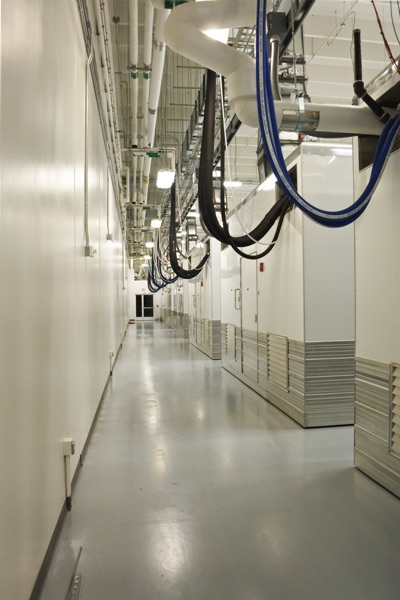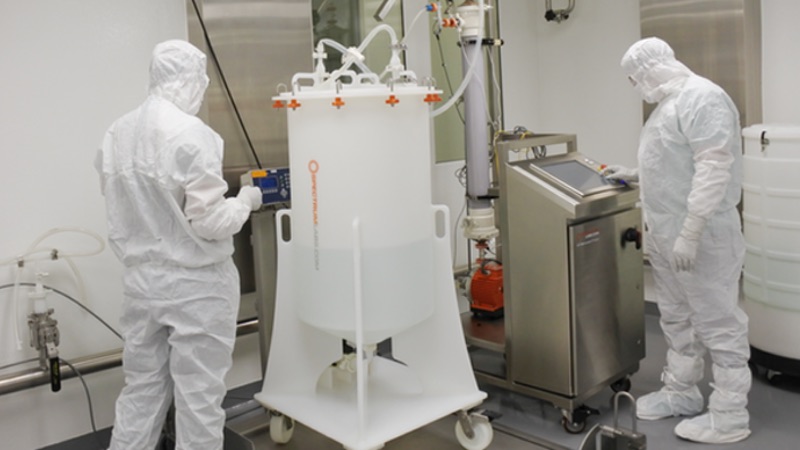Commissioning and qualification (C&Q) are terms and processes related to the manufacturing of pharmaceutical or biotechnology products. Each term represents a scope of work that is part of a larger framework for making sure that a facility —and the equipment in it— will function as required and be approved by the regulatory agencies that have jurisdiction over that facility.
C&Q is a highly multifaceted process. Such complexity may lead to confusion regarding the steps required. Indeed, there are several key questions to take into consideration, which can be identified as the following:
- What is the purpose or end goal of the process? This is the most important question.
- What do commissioning and qualification actually mean?
- Who are the stakeholders?
- How do you carry them out at a facility/cleanroom?
- What are some of the challenges faced?
“Begin with the end in mind” is a quote from Covey, fitting here as it can be easy to forget the objective of C&Q once you dive into the details.
However, it should never be lost that the goal of the C&Q process is "to obtain a quality product manufactured in this facility".
For finished products, this quality means the product has been consistently produced with the proper identity, strength, and purity to ensure safety and effectiveness (efficacy). Also known as the quality target product profile (QTPP).
Quality also means the manufacturer has quality systems in place and has performed a risk management assessment of the facility and the manufacturing processes for the product.
Key concepts
The first key term that comes to mind is commissioning; a systematic and documented approach to the startup and turnover of facilities, building systems, and equipment to end-users. The results ensure that the design requirements, specification documents, and all stakeholder expectations are met.
Commissioning verifies that what was specified was installed, that it functions properly, and that it was successfully turned over to the user. During commissioning, the operations and maintenance manuals are verified, and personnel are trained. Activities in this phase may include design reviews, factory acceptance testing, site acceptance testing, and functional testing.
Summary reports are generated after commissioning and are an overview of the results and any deviations encountered during testing.

Qualification extends beyond commissioning to accomplish the validation master plan
During commissioning, the primary focus is placed on satisfying engineering requirements for the facility, defined earlier in the project.
Next, qualification refers to the activities undertaken to demonstrate that facilities, building systems, and process equipment are suitable and perform as specified in project design documents. Qualification extends beyond commissioning in that it meets the demands and criteria of the validation master plan (VMP).
Moreover, qualification is primarily concerned with verifying and documenting that the facility, systems and process equipment that have a direct impact on product quality are rigorously tested and documented.
In cleanrooms, any system that affects these following parameters will need qualification: air purity, temperature, room pressure and humidity.
Qualification consist of four parts:
- Design qualification (DQ): the documented verification that the proposed design of the facilities, systems and equipment is “suitable for the intended purpose”.
- Installation qualification (IQ): The facility and process equipment are installed per the contract documents.
- Contract documents include all drawings, specifications, piping and instrumentation (P&ID) diagrams, etc.
- Operational qualification (OQ): The facility and process equipment operate as intended throughout all anticipated ranges of performance.
- Performance qualification (PQ): The facility and process equipment perform as they are intended and meet predetermined acceptance criteria over a specified period.
While commissioning can be viewed as primarily an engineering test, qualification testing is directed with oversight from the quality assurance team. Thus identifying two of the stakeholders involved in the C&Q process (engineering and quality assurance).
A team effort
It cannot be understated how important it is to clearly identify who each stakeholder is and what role each is to play in the C&Q process. Earlier, we confirmed that safety and effectiveness is the end goal and that there must be a quality system in place to guarantee these.
It would not be possible to develop those systems and subsequently achieve that goal without a robust and integrated effort between at least the following departments:
- Manufacturing
- Operations
- Engineering
- QA and QC
- Operational and Informational Technologies
Additional stakeholders that will be involved will be any local, regional or national authorities with jurisdiction in the area of the facility. One of the reasons that each of the stakeholders needs to be involved in the project early is the FDA stipulation that quality cannot be tested into a product. This means that quality needs to be designed into the product, the facility and all processes associated with the manufacturing of that specific product.

To accomplish this, subject matter experts from each team and discipline will need to be part of the design of the product, facility, and processes from the earliest stages. A suggested starting point for most companies is to begin the documentation process by developing a user requirement specification (URS). The URS will be defined further below.
Cleanroom C&Q
What about steps that occur before a URS is written relating to the product itself? The commissioning and IQ/OQ of a facility and cleanroom are predicated upon previous steps. So from the beginning, the QTPP for the drug product is defined by the product development and manufacturing teams, and then critical quality attributes (CQAs) are established.
CQAs are physical, chemical, biological, or microbiological properties or characteristics that should be within an appropriate limit to ensure the desired product quality.
For example, if the process involves an oral solid dosage product that requires the use and mixing of powders, then wouldn’t it be important to determine the effective relative humidity range in the suite?
Once the CQAs are established, critical process parameters (CPPs) are identified. These are any variability that has an impact on a CQA and therefore, should be monitored or controlled to ensure quality.
The definitions of the CPPs begin to crystalise some of the design requirements for the facility and processes, and subsequently, what will be required in the C&Q process.
For example, if the process involves an oral solid dosage product that requires the use and mixing of powders, then wouldn’t it be important to determine the effective relative humidity range in the suite? Therefore, the HVAC system will need to be designed suitably.
What about where the product or API is highly toxic? What kind of room pressurisation and room classification will be established to protect the product and/or personnel? These specifications will be summarised and defined in the following step, which is the creation of the URS.
The URS is generated as a joint effort between product development, manufacturing, engineering and quality assurance, with scope including:
- Level-1 Full details of end user operability
- Level-2 Full details of functionality
- Level-3 Software functionality interface
- A full description of the required system performance
- Performance criteria, critical parameters and operating range
- Cleaning and maintenance requirements
- Appropriate regulatory requirements
- Documentation requirements
- Training requirements
- Any required industry standard testing
Once the URS has been approved, the functional design specification (FDS) will be developed. The FDS will be a collaborative effort between users who developed the URS and the team of engineers, scientists, vendors, constructors etc., who will be responsible for delivering the project to meet URS requirements.
No demand from the URS should be unfulfilled by the FDS, and the FDS will need to confirm that all GMP requirements will be satisfied with the design. These requirements would include the ability to test all design elements later during commissioning, qualification and validation.
The master plan
Before C&Q can begin, several additional events must occur. These include the final project design, design review, development of the VMP, and then the construction of the facility.
After completion of the final project design documents, the project might also include an enhanced design review (EDR). The EDR is “the documented verification that the proposed design of the facilities, systems and equipment is suitable for the intended purpose”.
The VMP is a high-level documented plan that establishes an umbrella validation plan. It identifies the layout of the operation, the associated utilities and systems, the equipment, and the processes to be validated. It also provides information as to the extent of the qualification (IQ, OQ, PQ), testing requirements, required documentation, acceptance criteria, SOPs, training, and responsibilities. While these activities are being completed, the project is constructed.
To review. Presented in sequence and at a high level, these include:
- Define the quality target product profile (QTPP)
- Establishment of critical quality
- attributes (CQAs)
- Definition of critical process parameters (CPPs)
- Definition of the user requirement specification (URS)
- Definition of functional design specification (FDS)
- The project design
- Enhanced design review (EDR)
- Development of the validation master plan (VMP)
- Project construction
- Project commissioning
- Installation qualification (IQ)
- Operational qualification (OQ)
Facing the challenge
Frequently asked questions revolve around the challenges in the C&Q of a facility or cleanroom. Environmental control is one of them.
The primary goal of every project is to deliver safe and efficacious products to the patient. Therefore, it is imperative that the environmental control of the facility making that product function is at its optimal performance.
Maintaining environmental control of complex facilities and processes is significant and will require the integration of industrial automation products, for the process equipment, and building control systems such as HVAC and the environmental monitoring system.
These systems will probably be sourced from multiple vendors, and will all have to interface and, in the end, verify that all direct inputs and outputs were within range and under control.
Maintaining environmental control of complex facilities and processes is significant and will require the integration of industrial automation products
Traceability is a hot topic in this field. One of the challenges to C&Q of a cleanroom is that best practices for the industry would suggest that each project team would be able to provide traceability throughout the project life cycle.
FDA guidelines state that “user requirements should be traceable throughout the lifecycle.” Not proving traceability during the C&Q process would be problematic. Therefore, each commissioning team is required to test traceability of all design specifications for all facilities, process equipment and software developed for the project. A well-defined VMP, as well as detailed project controls, can help address this.
Another challenge for project teams that could affect the C&Q process is time constraints. Since the C&Q process comes at the end of the project, if the project is running behind schedule but the completion date hasn’t changed, then the C&Q process might be abbreviated pressurised under a compressed schedule, heightening the risk of mistake and increasing cost.
Fit for purpose
Designing a facility to fit a process is a challenge that many companies face. An example of this would be a company who decides to renovate. The existing facility might not have an HVAC system that is optimal to support the process, creating issues with cross-contamination, improper airflow and circulation, air purity, etc. The C&Q process is designed to confirm the design, but it can also find unintended issues as well.
We are all eventually consumers of the products that we help to provide by serving and participating in this industry. More than that, we have a significant opportunity to design, build and test facilities and products that will improve the lives of millions of people worldwide.
Commissioning and qualification are critical steps in the pharmaceutical drug and biologic supply chain process. With them, we can ensure that customers have access to the quality products that they need.
N.B. This article is featured in the May 2019 issue of Cleanroom Technology. The digital edition is available online.




